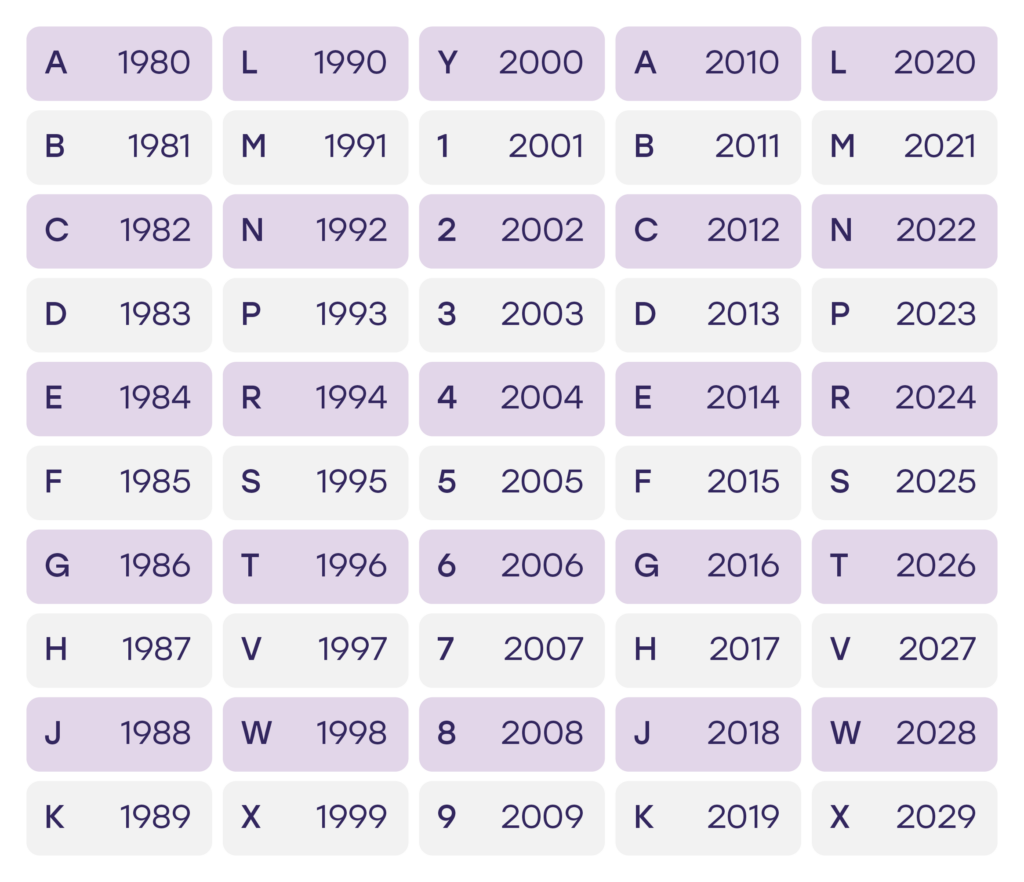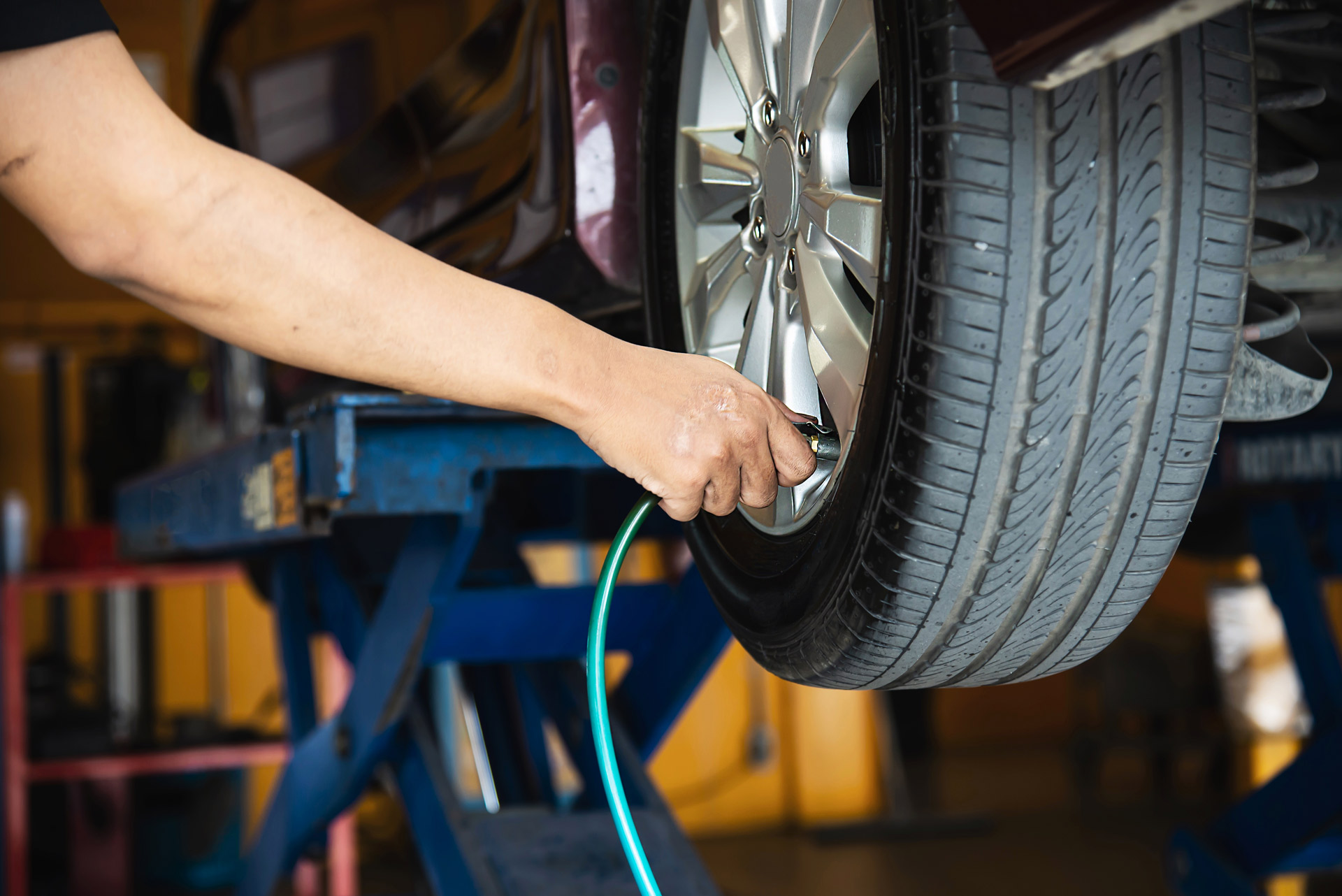


The average person typically references their car’s Vehicle Identification Number (VIN) when obtaining insurance, ordering parts from the dealership, or reviewing the corresponding vehicle history report. However, mechanics deal with VINs throughout the workday, whether referencing specific part numbers or diagnostic and repair protocols. Without a VIN, automotive maintenance and repair would be significantly more complex—and confusing.
The guide below features a comprehensive VIN year chart designed to help mechanics quickly decode vehicle manufacturing years. Explore where to find VINs and how to read them accurately and efficiently. In conjunction with Identifix’s suite of diagnostic and repair tools, the VIN year chart below can help technicians quickly access accurate, customized repair information to boost effectiveness and productivity.

A VIN differentiates one vehicle from the next, whether that vehicle is a:
Every vehicle produced since 1981 has a VIN, as mandated by the National Highway Traffic Safety Administration (NHTSA). Prior to 1981, several automotive manufacturers used VINs, but they didn’t follow the same standardized formatting as those designated in 1981 and thereafter. Thus, the first VINs dating back to 1954 aren’t necessarily decodable unless you contact the manufacturer directly.
The amount of information contained within a VIN secures its value as more than just a string of numbers. Without VINs, no one would be able to distinguish between two cars of the same manufacturer, model, model year, color, equipment, and accessories, at least on paper. In many ways, VINs provide cars with a history or identity to separate them from any other vehicle on the road.
Like a serial number, VINs feature a 17-digit series of numbers and characters that correlate to specific meanings. Excluded numbers and characters include “i,” “o,” “q,” “u,” “z,” and ”0.” Vehicle Identification Numbers can be broken down as follows:
The Society of Automotive Engineers (SAE) grants manufacturers their WMI. The three-digit WMI incorporates the country code, automotive manufacturer, location of the vehicle’s construction, and vehicle type. For example, the country code “J” corresponds to Japan.
Digits four through eight indicate the vehicle type, model type, body style, and engine type. The ninth digit is specific to North America and is required to validate the VIN in question. The U.S. Department of Transportation (DOT) developed advanced algorithms to inform the exact digit used in the VIN’s ninth slot.
Mechanics typically find the tenth digit the most useful, as it represents the model year. Excluding the characters listed above, the letters and numbers designating the model year repeat, circulating from “A” through “Y” and “1” through “9.” For example, the letter “E” references model years 1984 and 2014, while the number “2” references model years 2002 and 2032, should the same designation continue.
The VIN’s tenth through seventeenth digits correspond with the last eight digits of the VIN, the most often referenced digits of the entire number. The eleventh digit indicates the assembly plant, with a letter or number corresponding to the specific location. The letter “W” corresponds to Germany, while the numbers “1,” “4,” or “5” reference the U.S., and “6” points to Australia.
Mechanics can leverage the VIN year chart in multiple ways, from reviewing what equipment a vehicle featured from the factory to completing warranty repair work associated with specific models or model years. Below are the most common use cases for a VIN year chart:
This newfound knowledge of VINs enables mechanics to approach repairs more informed of the specifics of the vehicle they’re working on.
The VIN is not difficult to find on your vehicle if you know where to look. You can also reference it using multiple documents associated with your car. Look for the VIN in the following locations:
Matching the VIN on the title to the numbers listed on the vehicle is a vital step when purchasing a car, especially from a private party. If these numbers do not match, the vehicle may have been illegally assembled piecemeal.
Quickly identify the fix! Identifix Direct-Hit® Mobile now puts repair information in the palm of your hand, all without leaving the vehicle. Simply take a photo of the VIN and begin navigating the all-new Direct-Hit experience of Hotline Archives and OEM content.
The VIN provides the key to streamlining diagnostic and repair processes, from determining what issues correspond to various model years to ordering replacement parts. Yet, with the Identifix suite of diagnostic and repair tools, this 17-digit key unlocks so much more. Contact us to discover how you can increase your productivity and boost your bottom line with the comprehensive auto repair software solutions available only through Identifix.
Did you like this article? Find more great content at identifx.com/blogs and solera.com/blog.

Identifix is the leading provider of automotive repair shop solutions and sevices designed to improve shop profitability and repair outcomes.
"*" indicates required fields